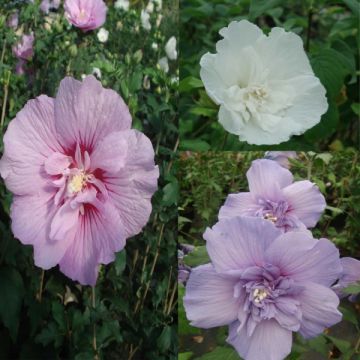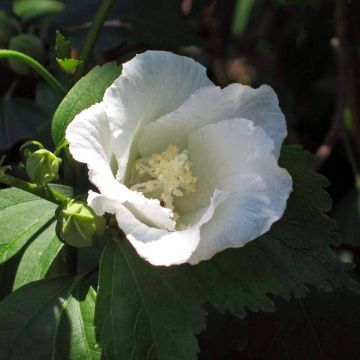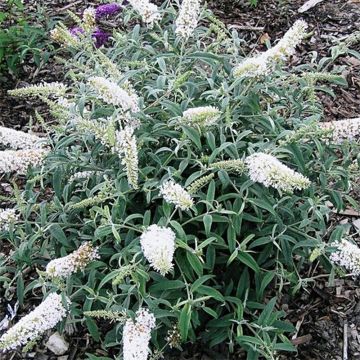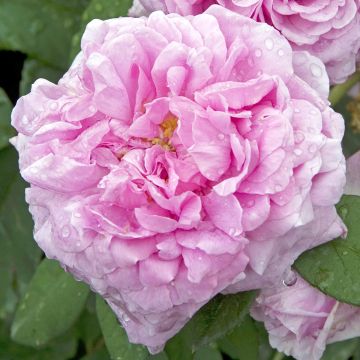

Juniperus x pfitzeriana Gold Star
Juniperus x pfitzeriana Gold Star
Juniperus pfitzeriana Gold Star
Pfitzer Juniper, Chinese juniper
Special offer!
Receive a €20 voucher for any order over €90 (excluding delivery costs, credit notes, and plastic-free options)!
1- Add your favorite plants to your cart.
2- Once you have reached €90, confirm your order (you can even choose the delivery date!).
3- As soon as your order is shipped, you will receive an email containing your voucher code, valid for 3 months (90 days).
Your voucher is unique and can only be used once, for any order with a minimum value of €20, excluding delivery costs.
Can be combined with other current offers, non-divisible and non-refundable.
Home or relay delivery (depending on size and destination)
Schedule delivery date,
and select date in basket
This plant carries a 24 months recovery warranty
More information
We guarantee the quality of our plants for a full growing cycle, and will replace at our expense any plant that fails to recover under normal climatic and planting conditions.

Would this plant suit my garden?
Set up your Plantfit profile →
Description
Juniperus x pfitzeriana 'Gold Star' is a compact hybrid juniper with a very graphic appearance, notable for its beautiful yellow foliage throughout the year, as well as its low, wide cushion-like habit. In addition to these ornamental qualities, it has excellent cold resistance and is easy to grow in any well-drained soil. This conifer tolerates drought well, making it perfect for rock gardens, slopes, or structuring borders in small gardens.
Juniperus x media is a hybrid between Juniperus chinensis (originating from East Asia and known for its many ornamental varieties) and J. sabina (a creeping shrub found in the mountains of Europe, North Africa, and Asia). From these two parent species, it has inherited numerous robust characteristics that make it valuable for ornamental use.
The 'Gold Star' variety is an improvement of the well-known 'Pfitzeriana Aurea' commonly found in parks and gardens. This mutation, selected in 1971 in California by J.C. Bakker & Sons, has a more spreading habit than its parent variety, and its yellow colour is brighter and persists throughout the year. However, if planted in shady conditions, it will turn yellow-green, which is why a sunny position is preferable from an aesthetic point of view. 'Gold Star' forms a compact and spreading bush measuring about 60cm (23.6in) in height and 1.50m (4ft 11in) in width after 10 years. Its annual growth rate is moderate, making it compatible with rock gardens where it can coexist with other plants without smothering them. Its slender and flexible branches, with a feathery appearance, droop at their tips and are covered with tightly-packed, non-prickly needles. This conifer spreads by forming successive tiers, slightly obliquely, giving it a unique and interesting architecture in contemporary gardens. Its foliage is golden yellow in spring and maintains its beautiful color throughout the year. The fruits that form on the female plants are berries called galbulus, which are whitish in colour. Junipers have a shallow root system that makes them vulnerable to strong winds and difficult to combine with perennials.
The 'Gold Star' juniper is a hardy and bright small conifer, easy to grow and maintain, that has proven its robustness on slopes and in large rock gardens among rocks. With its moderate growth and year-round yellow foliage, it will work wonders as a border plant. It will fit well in contemporary gardens, alongside dwarf conifers with a conical or bushy habit, such as the Thuja 'Zmatlik', with an equally strange appearance as its name, or one of the many varieties of dwarf spruce. Pinus nigra 'Green Tower', which has similar cultural requirements, will also be a perfect companion, with its unusual graphic appearance that suits modern gardens, while its dark green foliage creates a striking contrast with that of our little Juniperus.
Report an error about the product description
Juniperus x pfitzeriana Gold Star in pictures




Plant habit
Flowering
Foliage
Safety measures
Botanical data
Juniperus
pfitzeriana
Gold Star
Cupressaceae
Pfitzer Juniper, Chinese juniper
Cultivar or hybrid
atteinterespiratoire
Cette plante peut entraîner des symptômes allergiques.
Evitez de la planter si vous ou vos proches souffrez de rhinite saisonnière ("rhume des foins").
Davantage d'informations sur https://plantes-risque.info
Other Juniperus - Juniper
View all →Planting and care
Juniperus 'Gold Star' should be planted from September to November and from February to April in well-drained, light, even limestone and poor soil. A rocky or sandy soil that is occasionally dry does not bother it. Choose a very sunny spot in the North and partially shaded in the South. This variety generally tolerates shade better than others, but the foliage color will be less yellow.
Soak the root balls well before planting. Add organic amendment at planting and water heavily in the first few years. Apply a special conifer fertilizer every year in April and cultivate the soil in summer. This very hardy conifer fears heavy, waterlogged soils in winter. Pruning is not necessary unless you want to limit its growth a bit. In that case, trim the tips from June to September, without cutting into the old wood.
Planting period
Intended location
Care
This item has not been reviewed yet - be the first to leave a review about it.
Similar products
Haven't found what you were looking for?
Hardiness is the lowest winter temperature a plant can endure without suffering serious damage or even dying. However, hardiness is affected by location (a sheltered area, such as a patio), protection (winter cover) and soil type (hardiness is improved by well-drained soil).

Photo Sharing Terms & Conditions
In order to encourage gardeners to interact and share their experiences, Promesse de fleurs offers various media enabling content to be uploaded onto its Site - in particular via the ‘Photo sharing’ module.
The User agrees to refrain from:
- Posting any content that is illegal, prejudicial, insulting, racist, inciteful to hatred, revisionist, contrary to public decency, that infringes on privacy or on the privacy rights of third parties, in particular the publicity rights of persons and goods, intellectual property rights, or the right to privacy.
- Submitting content on behalf of a third party;
- Impersonate the identity of a third party and/or publish any personal information about a third party;
In general, the User undertakes to refrain from any unethical behaviour.
All Content (in particular text, comments, files, images, photos, videos, creative works, etc.), which may be subject to property or intellectual property rights, image or other private rights, shall remain the property of the User, subject to the limited rights granted by the terms of the licence granted by Promesse de fleurs as stated below. Users are at liberty to publish or not to publish such Content on the Site, notably via the ‘Photo Sharing’ facility, and accept that this Content shall be made public and freely accessible, notably on the Internet.
Users further acknowledge, undertake to have ,and guarantee that they hold all necessary rights and permissions to publish such material on the Site, in particular with regard to the legislation in force pertaining to any privacy, property, intellectual property, image, or contractual rights, or rights of any other nature. By publishing such Content on the Site, Users acknowledge accepting full liability as publishers of the Content within the meaning of the law, and grant Promesse de fleurs, free of charge, an inclusive, worldwide licence for the said Content for the entire duration of its publication, including all reproduction, representation, up/downloading, displaying, performing, transmission, and storage rights.
Users also grant permission for their name to be linked to the Content and accept that this link may not always be made available.
By engaging in posting material, Users consent to their Content becoming automatically accessible on the Internet, in particular on other sites and/or blogs and/or web pages of the Promesse de fleurs site, including in particular social pages and the Promesse de fleurs catalogue.
Users may secure the removal of entrusted content free of charge by issuing a simple request via our contact form.
The flowering period indicated on our website applies to countries and regions located in USDA zone 8 (France, the United Kingdom, Ireland, the Netherlands, etc.)
It will vary according to where you live:
- In zones 9 to 10 (Italy, Spain, Greece, etc.), flowering will occur about 2 to 4 weeks earlier.
- In zones 6 to 7 (Germany, Poland, Slovenia, and lower mountainous regions), flowering will be delayed by 2 to 3 weeks.
- In zone 5 (Central Europe, Scandinavia), blooming will be delayed by 3 to 5 weeks.
In temperate climates, pruning of spring-flowering shrubs (forsythia, spireas, etc.) should be done just after flowering.
Pruning of summer-flowering shrubs (Indian Lilac, Perovskia, etc.) can be done in winter or spring.
In cold regions as well as with frost-sensitive plants, avoid pruning too early when severe frosts may still occur.
The planting period indicated on our website applies to countries and regions located in USDA zone 8 (France, United Kingdom, Ireland, Netherlands).
It will vary according to where you live:
- In Mediterranean zones (Marseille, Madrid, Milan, etc.), autumn and winter are the best planting periods.
- In continental zones (Strasbourg, Munich, Vienna, etc.), delay planting by 2 to 3 weeks in spring and bring it forward by 2 to 4 weeks in autumn.
- In mountainous regions (the Alps, Pyrenees, Carpathians, etc.), it is best to plant in late spring (May-June) or late summer (August-September).
The harvesting period indicated on our website applies to countries and regions in USDA zone 8 (France, England, Ireland, the Netherlands).
In colder areas (Scandinavia, Poland, Austria...) fruit and vegetable harvests are likely to be delayed by 3-4 weeks.
In warmer areas (Italy, Spain, Greece, etc.), harvesting will probably take place earlier, depending on weather conditions.
The sowing periods indicated on our website apply to countries and regions within USDA Zone 8 (France, UK, Ireland, Netherlands).
In colder areas (Scandinavia, Poland, Austria...), delay any outdoor sowing by 3-4 weeks, or sow under glass.
In warmer climes (Italy, Spain, Greece, etc.), bring outdoor sowing forward by a few weeks.


















































